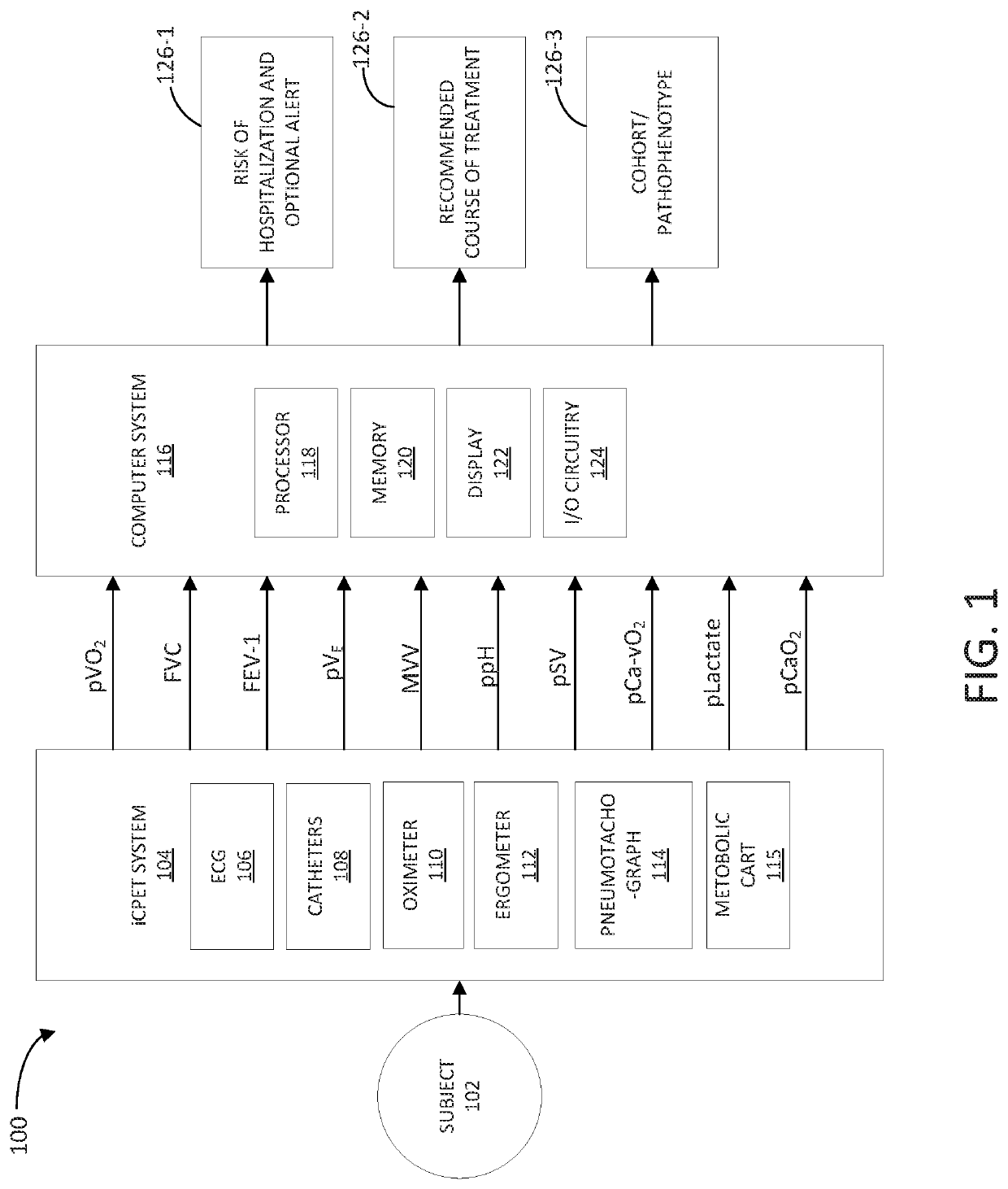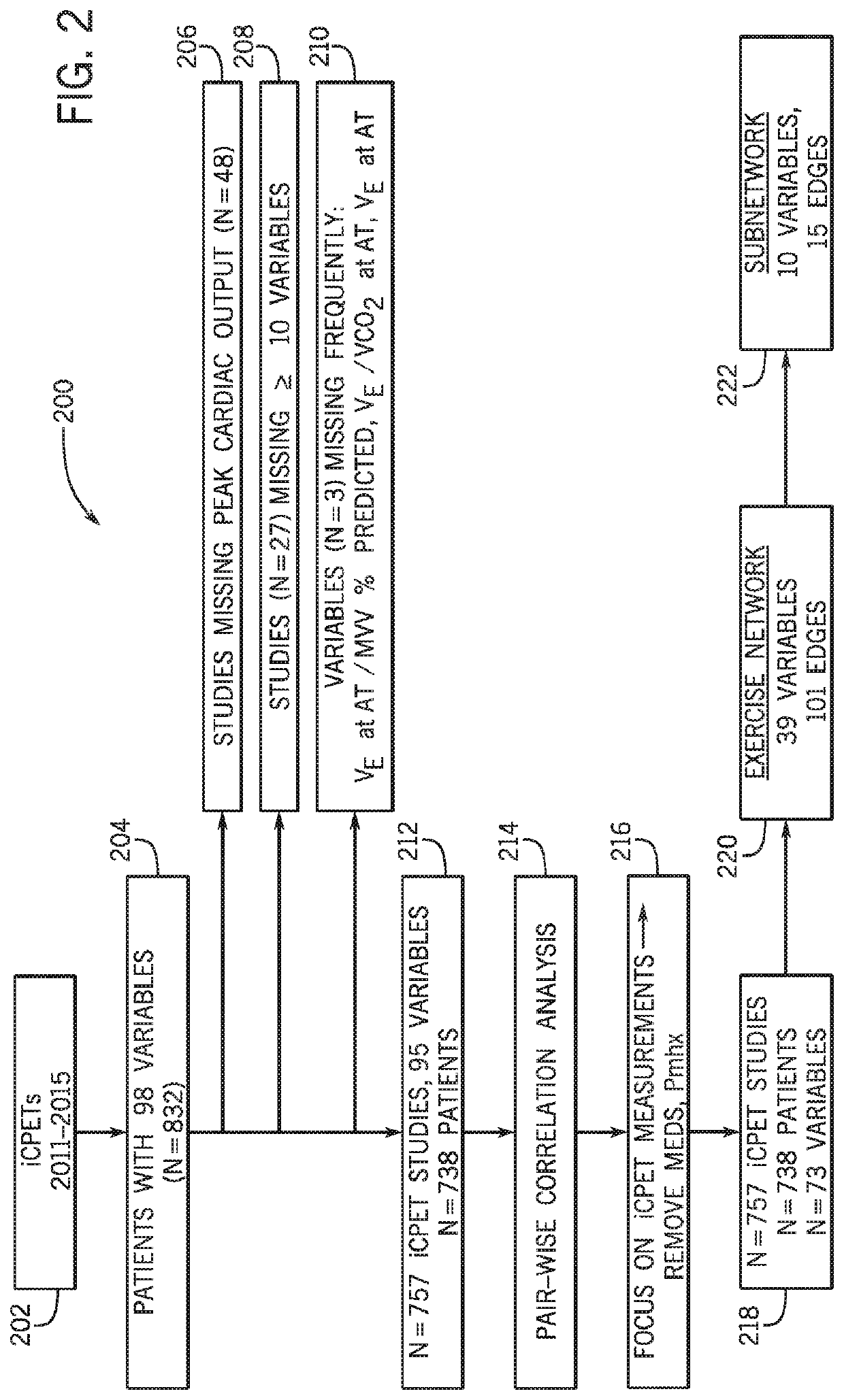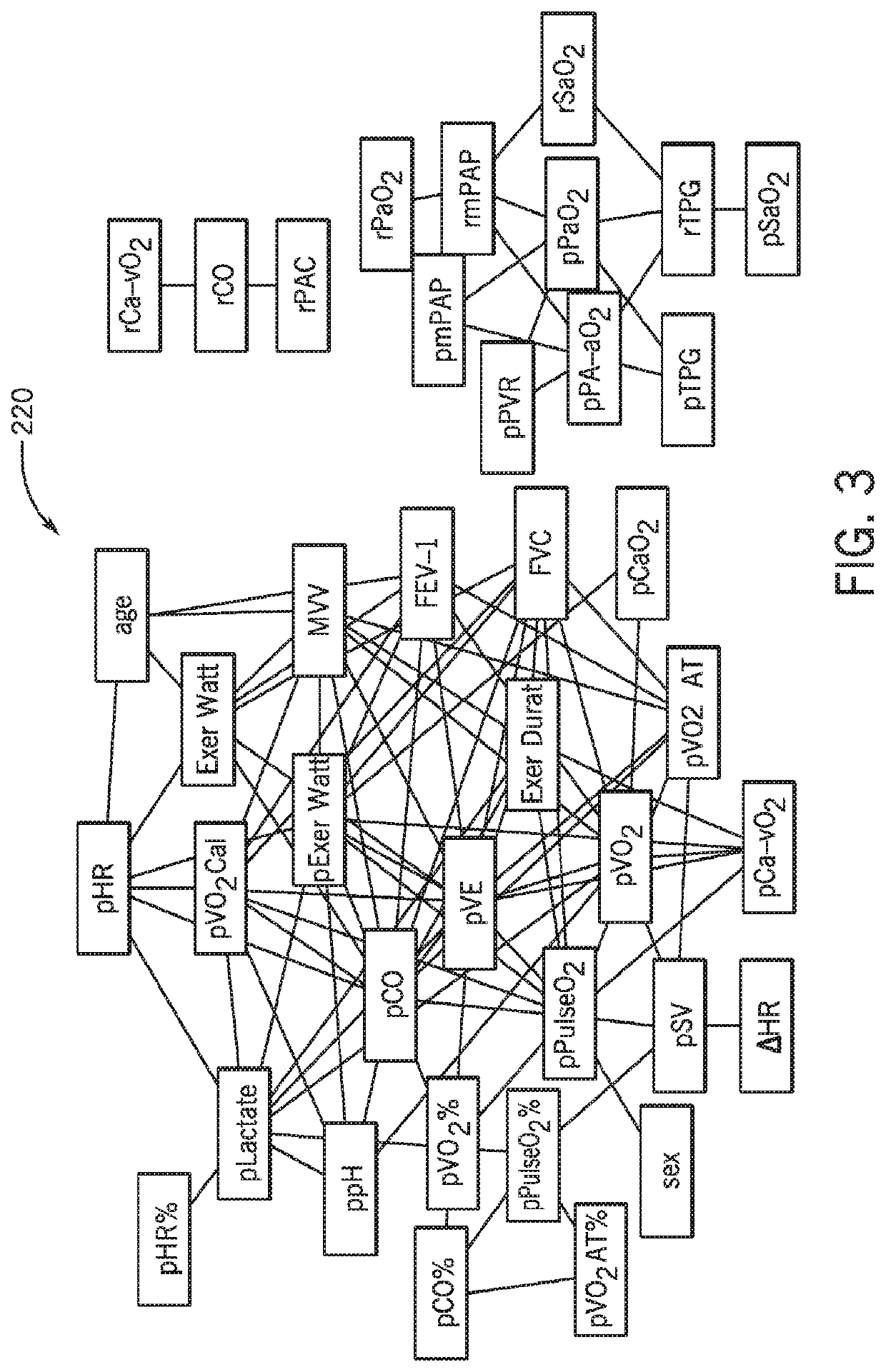Systems and Methods for Automated Treatment Recommendation Based on Pathophenotype Identification
a technology of automatic treatment recommendation and pathophenotype, applied in the field of system and method for automated treatment recommendation based on pathophenotype identification, can solve the problems of increasing healthcare cost burden and inability to use current methods, and achieve the effect of improving results and flexibility
- Summary
- Abstract
- Description
- Claims
- Application Information
AI Technical Summary
Benefits of technology
Problems solved by technology
Method used
Image
Examples
Embodiment Construction
[0037]The systems and methods of the present invention can be utilized with a wide variety of data and systems and methods for acquiring and processing data. Some non-limiting examples of embodiments that include invasive cardiopulmonary exercise testing (iCPET) systems follow hereafter. However, the systems and methods of the present disclosure are not limited to these modalities.
[0038]As will be described, in one aspect, the present disclosure provides systems and methods for automatically risk stratifying a subject (e.g., a patient) and generating a prognosis (e.g., including treatment recommendations, risk of hospitalization, and / or alerts indicating that the subject needs to be hospitalized) based on an identified cohort to which the subject belongs. As used to herein, a “cohort” may refer to a classification of subjects with a given disease or disorder (e.g., as determined via k-means clustering), with different cohorts being associated with different pathophenotypes of the gi...
PUM
 Login to View More
Login to View More Abstract
Description
Claims
Application Information
 Login to View More
Login to View More - Generate Ideas
- Intellectual Property
- Life Sciences
- Materials
- Tech Scout
- Unparalleled Data Quality
- Higher Quality Content
- 60% Fewer Hallucinations
Browse by: Latest US Patents, China's latest patents, Technical Efficacy Thesaurus, Application Domain, Technology Topic, Popular Technical Reports.
© 2025 PatSnap. All rights reserved.Legal|Privacy policy|Modern Slavery Act Transparency Statement|Sitemap|About US| Contact US: help@patsnap.com



